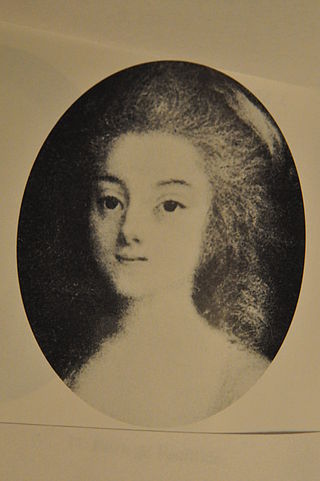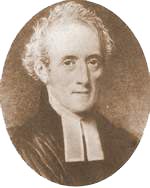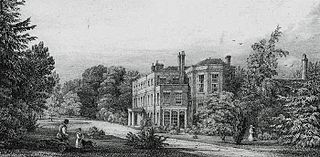
Jane Austen was an English novelist known primarily for her six novels, which implicitly interpret, critique, and comment upon the British landed gentry at the end of the 18th century. Austen's plots often explore the dependence of women on marriage for the pursuit of favourable social standing and economic security. Her works are an implicit critique of the novels of sensibility of the second half of the 18th century and are part of the transition to 19th-century literary realism. Her deft use of social commentary, realism and biting irony have earned her acclaim among critics and scholars.

Sense and Sensibility is a novel by Jane Austen, published in 1811. It was published anonymously; By A Lady appears on the title page where the author's name might have been. It tells the story of the Dashwood sisters, Elinor and Marianne as they come of age. They have an older half-brother, John, and a younger sister, Margaret.

Northanger Abbey is a coming-of-age novel and a satire of Gothic novels written by Jane Austen. Northanger Abbey was completed in 1803, the first of Austen's novels completed in full, but was published posthumously in 1817 with Persuasion. The story concerns Catherine Morland, the naïve young protagonist, and her journey to a better understanding of herself and of the world around her. How Catherine views the world has been distorted by her fondness for Gothic novels and an active imagination.
Sanditon (1817) is an unfinished novel by the English writer Jane Austen. In January 1817, Austen began work on a new novel she called The Brothers, later titled Sanditon, and completed eleven chapters before stopping work in mid-March 1817, probably because of illness. R.W. Chapman first published a full transcription of the novel in 1925 under the name Fragment of a Novel.

Steventon is a village and a civil parish with a population of about 250 in north Hampshire, England. Situated 7 miles south-west of the town of Basingstoke, between the villages of Overton, Oakley and North Waltham, it is close to Junction 7 of the M3.

Becoming Jane is a 2007 biographical romantic drama film directed by Julian Jarrold. It depicts the early life of the British author Jane Austen and her lasting love for Thomas Langlois Lefroy. American actress Anne Hathaway stars as the title character, while her romantic interest is played by Scottish actor James McAvoy. Also appearing in the film are Julie Walters, James Cromwell and Maggie Smith. This was Ian Richardson's final film performance before his death in the same year as the film's release. The film was produced in cooperation with several companies, including Ecosse Films and Blueprint Pictures. It also received funding from the Irish Film Board and the UK Film Council Premiere Fund.
Cassandra Willoughby, Duchess of Chandos was an English historian, travel writer and artist. She spent more than a quarter-century overseeing the restoration of the gardens and rebuilding of the family mansion at Wollaton Hall, now in Nottingham.

Cassandra Elizabeth Austen was an amateur English watercolourist and the elder sister of Jane Austen. The letters between her and Jane form a substantial foundation to scholarly understanding of the life of the novelist.

Jane Austen lived her entire life as part of a family located socially and economically on the lower fringes of the English gentry. The Rev. George Austen and Cassandra Leigh, Jane Austen's parents, lived in Steventon, Hampshire, where Rev. Austen was the rector of the Anglican parish from 1765 until 1801. Jane Austen's immediate family was large and close-knit. She had six brothers—James, George, Charles, Francis, Henry, and Edward—and a beloved older sister, Cassandra. Austen's brother Edward was adopted by Thomas and Elizabeth Knight and eventually inherited their estates at Godmersham, Kent, and Chawton, Hampshire. In 1801, Rev. Austen retired from the ministry and moved his family to Bath, Somerset. He died in 1805 and for the next four years, Jane, Cassandra, and their mother lived first in rented quarters and then in Southampton where they shared a house with Frank Austen's family. During these unsettled years, they spent much time visiting various branches of the family. In 1809, Jane, Cassandra, and their mother moved permanently into a large "cottage" in Chawton village that was part of Edward's nearby estate. Austen lived at Chawton until she moved to Winchester for medical treatment shortly before her death in 1817.

A Memoir of Jane Austen is a biography of the novelist Jane Austen (1775–1817) published in 1869 by her nephew James Edward Austen-Leigh. A second edition was published in 1871 which included previously unpublished Jane Austen writings. A family project, the biography was written by James Edward Austen-Leigh but owed much to the recollections of Jane Austen's many relatives. However, it was the decisions of her sister, Cassandra Austen, to destroy many of Jane's letters after her death that shaped the material available for the biography.

Eliza Capot, Comtesse de Feuillide was the cousin, and later sister-in-law, of novelist Jane Austen. She is believed to have been the inspiration for a number of Austen's works, such as Love and Freindship, Henry and Eliza, and Lady Susan. She may have also been the model from whom the character of Mary Crawford is derived.
Colonel Brandon is a fictional character in Jane Austen's 1811 novel Sense and Sensibility. A quiet and reserved man, he forms an attachment to the middle Dashwood sister, Marianne whom he eventually marries happily.

Northanger Abbey is a 2007 British television film adaptation of Jane Austen's 1817 novel of the same name. It was directed by British television director Jon Jones and the screenplay was written by Andrew Davies. Felicity Jones stars as the protagonist Catherine Morland and JJ Feild plays her love interest Henry Tilney.

Edward Austen Knight was the third eldest brother of Jane Austen, and provided her with the use of a cottage in Chawton where she lived for the last years of her life. He was also High Sheriff of Kent in 1801.

Henry Thomas Austen was a militia officer, clergyman, banker and the brother of the novelist Jane Austen. He died in 1850 and was buried in Woodbury Park Cemetery, Tunbridge Wells.

The Fishmore Hall Hotel in Ludlow, Shropshire is a house of historical significance. A major part of it was built in about 1820 but some of the building may be older than this. It was a private residence for many years and in the late part of the 20th century it became a school. It was recently converted to a hotel.

Manydown — or Manydown Park — was an ancient manor in Wootton St Lawrence, Hampshire, England. The fortunes of the estate were associated with those of the Wither family for more than 400 years. Author Jane Austen (1775–1817) was a frequent visitor at the Manydown great house circa 1799–1806 and received her only known proposal of marriage there.

Jane Austen's parents, George (1731–1805), an Anglican rector, and his wife Cassandra (1739–1827), were members of the landed gentry. George was descended from wool manufacturers who had risen to the lower ranks of the gentry, and Cassandra was a member of the Leigh family of Adlestrop and Longborough, with connections to the Barons Leighs of Stoneleigh Abbey in Stoneleigh, Warwickshire. They married on 26 April 1764 at Walcot Church in Bath. From 1765 to 1801, George was a rector of Anglican parishes in Steventon, Hampshire and a nearby village. Irene Collins estimates that when George Austen took up his duties as rector in 1764, Steventon comprised no more than about thirty families. From 1773 to 1796, he supplemented his income by farming and teaching three or four boys at a time.
Anne Brydges Lefroy (1747/8–1804) was an English writer. She wrote both prose and verse, some of which was published anonymously in her lifetime. Four years after Lefroy died, her friend Jane Austen wrote a poem lamenting her death.
George Austen (1731–1805) was a cleric of the Church of England, rector of Deane and Steventon in Hampshire. He is known as the father of Jane Austen.














